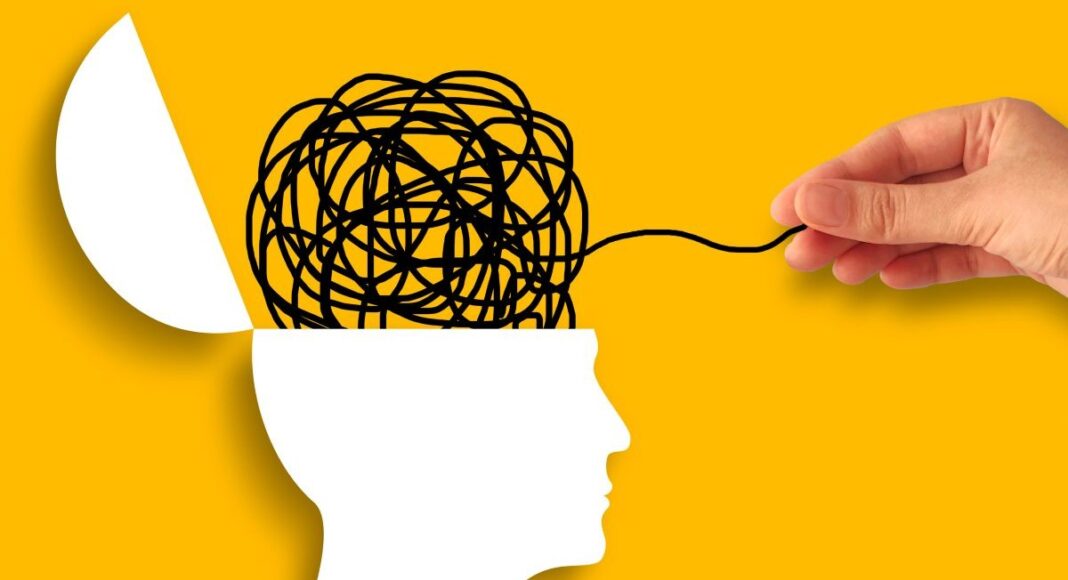Matt Lucky reviews Nobel Laureate Richard Thaler and Alex Imas’ newly updated book “The Winner’s Curse: Behavioral Economics Anomalies Then and Now,” now out at Simon & Schuster.
Near the conclusion of The Republic, Plato presents a portrait of the human mind as a menagerie of creatures contesting for dominance. The rational facet of the mind is represented by a human figure, the courageous and social aspect with a lion, and, lastly, the appetitive and impulsive part of the soul is something weirder, amorphous, and monstrous. Those appetites, he writes, are a “multicolored beast with a ring of many heads that it can grow and change at will — some from gentle, some from savage animals.” In exceptional individuals, the rational aspects of human nature predominate. Yet, alas, in an average person, the rational human is emaciated and dragged about fettered to the appetitive many-headed beast.
In the new updated edition of The Winner’s Curse, Nobel Laureate Richard Thaler and Alex Imas, both professors at the University of Chicago Booth School of Business, elucidate how behavioral economics makes sense of such internal contests between our rational faculties and the range of biases and impulses that render people something less than fully rational in practice. They explore this struggle through a series of behavioral anomalies that contradict the expectations of standard economic theory that people are, for the most part, selfish and creatures that “have stable, well-defined preferences and make rational choices consistent with those preferences in markets that (eventually) clear.”The Winner’s Curse contains a wealth of empirical evidence to describe how people deviate from the ideal theory presented in a narrative that is easily accessible to non-economists.
The original edition of the book, released in 1991, compiled the insights Thaler had accumulated in writing a series of features in the Journal of Economic Perspectives. In this new edition, Thaler and Imas have added a section to the end of nearly every chapter with updates that compile research from the subsequent three decades since the first release. These additions create a conversation between behavioral economics at its incipiency in the 1990s and the present. The updates largely confirm that previous anomalous findings do replicate, and that many of them can be observed in the wild beyond experimental settings, which addresses concerns regarding the external validity of scholarship presented in the first edition.
There are two main arcs of discussion running through The Winner’s Curse. First is the direct examination of assorted anomalous findings in human behavior that depart from the expectations of standard economic theory. These anomalies construct a narrative that the human mind is more a cacophonic mass rather than a singular rational entity. Secondly, throughout the book there is also a narrative concerning how the field of economics has adapted to the findings of behavioral economics.
Anomalies in human behavior
The Winner’s Curse covers a substantial range of behavioral phenomena, including the endowment effect, loss aversion, altruism, and the eponymous winner’s curse. I will comment here on a set of these anomalies and encourage readers to explore Thaler and Imas’s offerings on their own.
One grouping of anomalies of interest centers on intertemporal choices that involve trade-offs in how people value and decide choices across time. Thaler and Imas relate that standard economic theory employs the Exponential Discounting Model to understand how people make intertemporal choices. They explain that under exponential discounting, a person would be expected to value receiving a reward of $100 immediately at its face value. However, they would mentally discount the value of the same reward at 90% if it were received after a year’s wait, so $100 would be mentally valued at $90 (percentages and time intervals here are selected for the sake of the example). Across additional time periods, this compounds, so a wait of two years for $100 would be discounted by multiplying by 90% twice, to yield a mental valuation of $81. Importantly, the rate of discounting is expected to be constant between time periods. This model for behavior is theoretically attractive because, “if people discounted any other way, they would not behave consistently over time. They would choose one plan of action but then predictably change their mind later.” Alas, in practice, humans lack such consistency in how we execute plans in life.
Anomalies in intertemporal choices take a variety of forms. Thaler and Imas, for instance, relate the case of non-constant discount rates, which captures the notion that our rank orderings of preferences may change as future rewards approach the present. One may value getting to work on time tomorrow over 15 minutes of extra sleep in the morning. Yet, the next morning, as the potential to receive those extra minutes approaches, its relative value can overtake a timely arrival at the office. This inconsistency opens the door to questions about self-control. As they write, “who is sovereign—the self who sets the alarm clock to rise early, or the one who shuts it off the next morning and goes back to sleep?” Recall, in standard economic theory, people ought to be discounting future rewards at a consistent rate. Otherwise, they could not consistently stick to their plans. The alarm clock example captures how behaviors do not match those theoretical expectations.
Another anomaly is preference referrals. Thaler and Imas recount that “to economists, rationality often comes down to coherence or logical consistency,” and thus we expect that “if someone says they prefer to eat apples rather than blueberries right now, then they should definitely not say they also prefer to eat blueberries over apples.” In practice, again, such preference reversals occur in experiments and in the wilds of the real world.
For example, humans may judge the same objects with different yardsticks in different contexts. Thaler and Imas illustrate this point with the hypothetical of an individual purchasing a stereo system only to regret the decision later. When deciding between candidates in the store, it is easier for individuals to focus on small differences in sound quality between competing options. Yet, once they return home, they may instead focus on how the device visually clashes with the aesthetics of their apartment. That is, in the store, the stereo is evaluated on one metric and compared to rivals, and at home, it is evaluated on a new yardstick without rivals. Two contexts result in two evaluations. From this, Thaler and Imas remark that “values or preferences are commonly constructed in the process of elicitation.” Instead of having a singular, coherent, and consistent set of preferences, we are making things up as we go along. We often forge preferences in the moment based on unfocused and shifting dispositions and varying considerations.
Behavioral economics in academia
Thaler and Imas note that since the original edition of the book, “behavioral economists are thriving,” and the updates at the end of the chapters document the decades-long accumulation of supporting experimental replications that highlight the external validity of initial findings. For instance, they recount how the eponymous winner’s curse can be observed in the wild, as one study they highlight documents how, when there are bidding wars between two firms attempting to acquire a third, the firms that lost in their acquisition bids outperformed winning firms by 24% in subsequent stock market returns. Further, behavioral economics helps to explain, in ways standard economic theory cannot, a variety of real-world economic decisions, big and small, including why people routinely overpay for health insurance plans and how corporations leverage default biases against consumers (also explored in Nudge).
Yet, despite the accumulation of evidence supporting behavioral economics and running contrary to the standard economic theory, Thaler and Imas lament that “mainstream economics textbooks remain firmly anchored in the standard neoclassical framework.” Further, when behavioral economics does sneak its way into economics textbooks, they report it is most often contained in its own chapter as an annex of curiosities apart from the larger narrative.
What is more, throughout The Winner’s Curse, we are greeted with recurring narratives of recalcitrance on the part of adherents to standard economic theory holding out against the weight of evidence in Thaler and Imas’s collection of anomalies. This resistance often manifests as auxiliary hypotheses that patch the standard theory, rather than reassessing intellectual foundations at a deep level. The most prevalent example of this in the book is the common invocations of what Thaler and Imas describe as the confused-subjects hypothesis. The confused-subjects hypothesis posits that subjects in experiments might depart from the expectations of standard economic theory due to some deficit of understanding. A bit more knowledge or experience should remedy the situation. In the chapter on cooperation, for instance, the confused subjects’ explanation for higher rates of cooperative behavior than would be expected from rationally selfish individuals takes the form of the idea “that people really are the selfish jerks described in economic models, but they can be confused into acting like sensible, normal human beings in contrived settings such as experiments.”
At various other points, Thaler and Imas attribute economists’ adherence to theories with documented anomalies because those theories are “easy to use as part of a larger economic model,” or they fall into the allure of parsimony as “models of rational behavior are the easiest to formalize.” What is more, during his talk with Bethany McLean and Luigi Zingales at at the University of Chicago Stigler Center on October 14, Thaler discussed with the two hosts of the Capitalisn’t podcast how economists historically stuck with their standard model of rational human agents in part because it provided a means of constructing theories in the absence of the empirical behavioral data that has become plentiful only relatively recently. This is all to say, standard economic theory offered conveniences and utility in an academic environment prior to empirical data, and thus it was an easy default to fall into; behavioral economics, of course, predicts that such defaults are sticky.
Thaler and Imas certainly afford us a wealth of anomalies and criticisms of the standard theory, and yet there indeed seems to be no paradigm shift on the horizon. In keeping with the notion that our minds are many and not unitary, they contend we will never have a general overarching theory comparable to the standard economic theory. If we possess dappled minds composed of systems-of-systems and appetitive chimeras, then perhaps there is no new paradigm to shift to, or if one did appear, it would be a mere pretender to a properly empty throne. That parting note they offer nicely ties up the twin narratives of multitudinous anomalies in human behaviors and their implications for the study of human behavior among economists. To wit, there cannot be a unified theory of how minds work centered on rationality (or anything else) because unified minds do not exist in practice.
Author Disclosure: The author reports no conflicts of interest. You can read our disclosure policy here.
Articles represent the opinions of their writers, not necessarily those of the University of Chicago, the Booth School of Business, or its faculty.
Subscribe here for ProMarket’s weekly newsletter, Special Interest, to stay up to date on ProMarket’s coverage of the political economy and other content from the Stigler Center.






